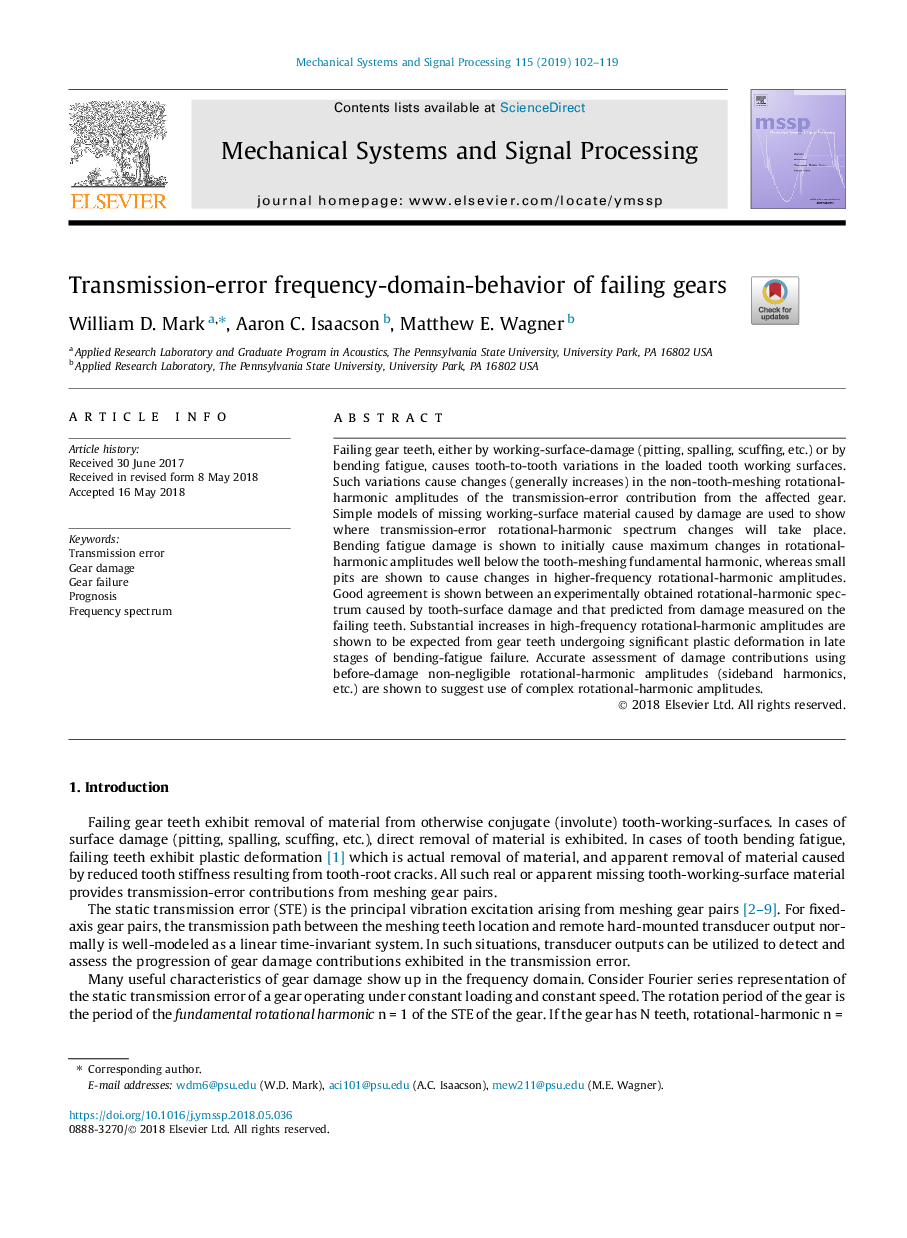| Article ID | Journal | Published Year | Pages | File Type |
|---|---|---|---|---|
| 6953445 | Mechanical Systems and Signal Processing | 2019 | 18 Pages |
Abstract
Failing gear teeth, either by working-surface-damage (pitting, spalling, scuffing, etc.) or by bending fatigue, causes tooth-to-tooth variations in the loaded tooth working surfaces. Such variations cause changes (generally increases) in the non-tooth-meshing rotational-harmonic amplitudes of the transmission-error contribution from the affected gear. Simple models of missing working-surface material caused by damage are used to show where transmission-error rotational-harmonic spectrum changes will take place. Bending fatigue damage is shown to initially cause maximum changes in rotational-harmonic amplitudes well below the tooth-meshing fundamental harmonic, whereas small pits are shown to cause changes in higher-frequency rotational-harmonic amplitudes. Good agreement is shown between an experimentally obtained rotational-harmonic spectrum caused by tooth-surface damage and that predicted from damage measured on the failing teeth. Substantial increases in high-frequency rotational-harmonic amplitudes are shown to be expected from gear teeth undergoing significant plastic deformation in late stages of bending-fatigue failure. Accurate assessment of damage contributions using before-damage non-negligible rotational-harmonic amplitudes (sideband harmonics, etc.) are shown to suggest use of complex rotational-harmonic amplitudes.
Related Topics
Physical Sciences and Engineering
Computer Science
Signal Processing
Authors
William D. Mark, Aaron C. Isaacson, Matthew E. Wagner,
